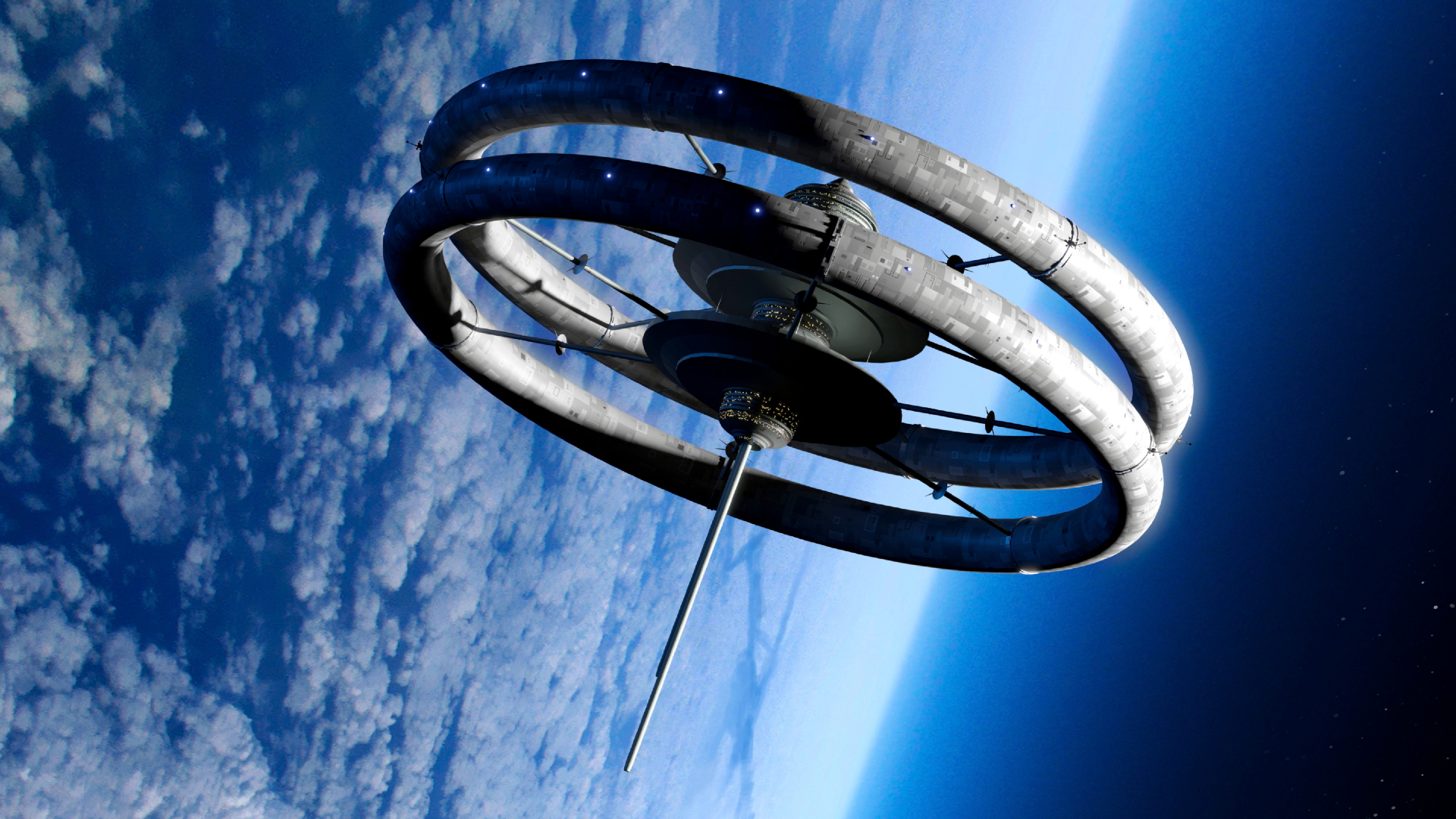Dark Halo Around Our Galaxy Looks Like Squished Beach Ball
This story was updated at 11:15 a.m. ET.
WASHINGTON ? The Milky Way may look like a giant spiral inspace, but in the world of invisible dark matter our galaxy is shaped like agiant, flattened beach ball, a new study has found.
The universe is thought to be made up of mostly darkmatter, a mysterious substance that does not reflect light, so isinvisible. Scientists cannot detect it directly; the only way they know it'sthere is by measuring its gravitational tug on regular matter.
Over 70 percent of the mass of most galaxies, including theMilky Way, is thought to be made up of this elusive material. Dark matter seemsto shroud the remaining visible matter in giant spheres called haloes.
But the new study found that the Milky Way's halo isn'texactly spherical, but squished. In fact, its beach-ballform is flattened in a surprising direction ? perpendicular to the galaxy'svisible, pancake-shaped spiral disk.
"We expected some amount of flattening based on thepredictions of the best dark matter theories," said researcher David Lawof UCLA. "But the extent, and particularly the orientation, of theflattening was quite unexpected. We're pretty excited about this, because itbegs the question of how our galaxy formed in its present orientation."
Law, along with co-researchers Steven Majewski of theUniversity of Virginia and Kathryn Johnston of Columbia University, announcedthe findings here today at the 215th meeting of the American AstronomicalSociety in Washington, D.C.
Breaking space news, the latest updates on rocket launches, skywatching events and more!
The research is the first time scientists have measured thethree-dimensional shape of a darkmatter halo. They traced it by measuring its effect on the small dwarfsatellites that orbit around the Milky Way. These are like miniature galaxies,with only a fraction of the number of the stars a full-fledged galaxy contains.
Though the mini-galaxies orbit too slowly to watch theirmovement in real time, astronomers can deduce their velocities by observing howsome stars are torn from them by tidal forces, leaving a trace of the galaxy'smotion like breadcrumbs along a path.
The scientists used measurements of the Sagittarius DwarfGalaxy, one of the largest of the small galaxies circling the Milky Way.For a long time, no one had been able to understand the orbit of this dwarf:Different parts of its path suggested different overall journeys.
Recently, the researchers finally made sense of Sagittarius'behavior by assuming that the Milky Way's dark matter halo has a differentlength in each of the three dimensions of space.
"At last we have a way of explaining what previouslyseemed like conflicting information about the Sagittarius system,"Majewski said.
- Top 10 Strangest Things in Space
- Video: Tiny Tough Dwarf Galaxy Makes Pretty Bubbles
- UnderstandingDark Matter

Clara Moskowitz is a science and space writer who joined the Space.com team in 2008 and served as Assistant Managing Editor from 2011 to 2013. Clara has a bachelor's degree in astronomy and physics from Wesleyan University, and a graduate certificate in science writing from the University of California, Santa Cruz. She covers everything from astronomy to human spaceflight and once aced a NASTAR suborbital spaceflight training program for space missions. Clara is currently Associate Editor of Scientific American. To see her latest project is, follow Clara on Twitter.
